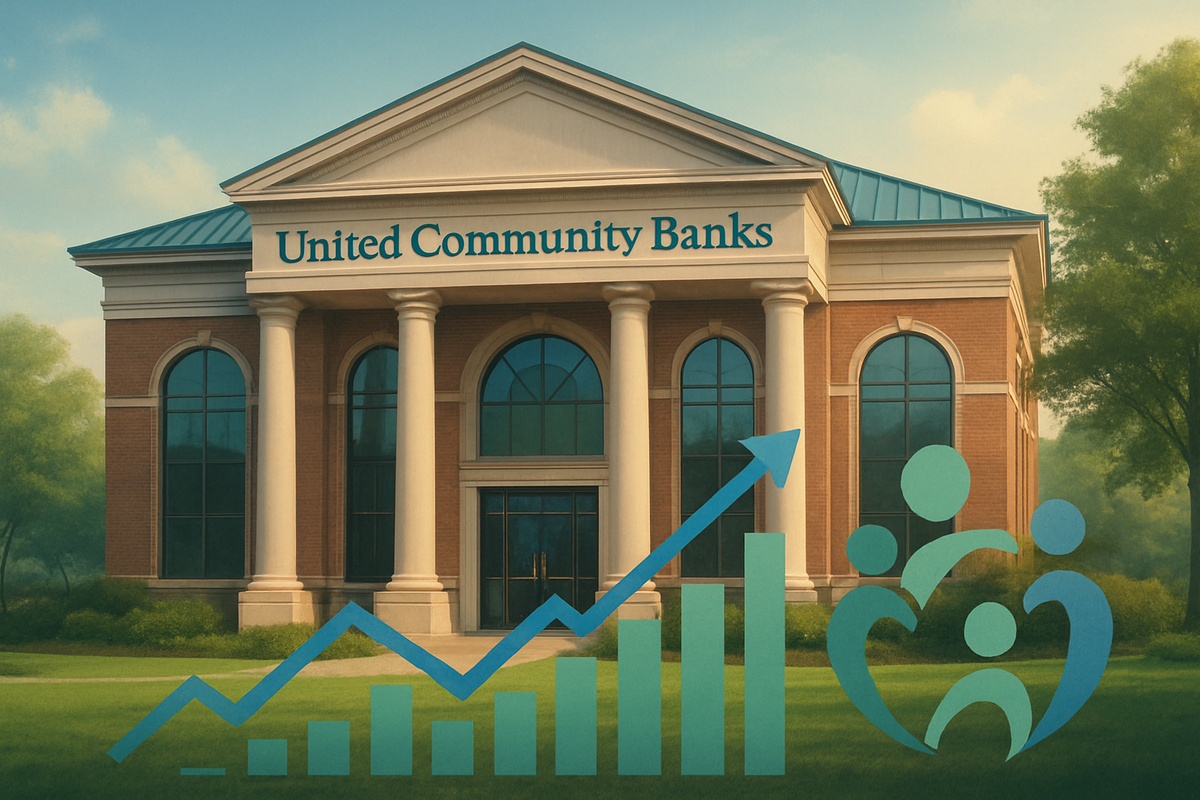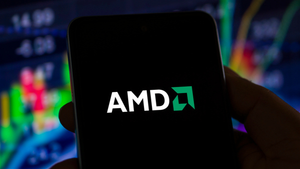
United Community Banks (NASDAQ: UCB) has announced a quarterly cash dividend of $0.25 per share, payable on January 5, 2026, to shareholders of record as of December 15, 2025. This declaration, made on November 13, 2025, aligns with the bank's most recent payout and underscores its consistent strategy of returning value to shareholders. The move comes as the regional banking sector navigates evolving economic conditions, with UCB's stable dividend policy offering a measure of confidence to investors.
The decision to maintain this dividend level, following a recent increase, reinforces UCB's reputation for financial prudence and shareholder commitment. In a financial landscape that has seen both significant growth and periods of uncertainty for regional banks, UCB's consistent approach provides a clear signal of its robust health and optimistic outlook for the coming quarters.
Dividend Consistency and Market Confidence
The Board of Directors of United Community Banks, Inc. formally approved the $0.25 per share quarterly cash dividend on November 13, 2025, which is the current date of this report. This payout is scheduled for January 5, 2026, with the ex-dividend date set for December 12, 2025, and the record date on December 15, 2025. This latest declaration follows a recent increase in the company's dividend. Previously, United Community Banks had paid $0.24 per share for several quarters, including March, June, September, and December of 2024, and March and June of 2025. The dividend was then raised to $0.25 per share, with an ex-dividend date on September 15, 2025, and payment on October 3, 2025. The current declaration therefore maintains this higher payout level, rather than introducing a new increase.
The bank's commitment to shareholder returns is further evidenced by its impressive track record. United Community Banks boasts a history of having raised its dividend for 11 consecutive years, a significant achievement that highlights its financial resilience and management's dedication to consistent shareholder value creation. This consistent growth strategy is a key factor in attracting and retaining income-focused investors, signaling a sustained pattern of profitability and capital management.
Following the announcement on November 13, 2025, the market's initial reaction to United Community Banks' stock (NASDAQ: UCB) was modestly positive. The stock saw a slight uptick, ranging from an increase of $0.03 (0.11%) to $0.16 (0.53%), with shares trading around $30.14. While not a dramatic surge, this mild positive movement suggests that investors view the consistent dividend payout favorably, interpreting it as a sign of financial stability and a healthy outlook for the regional banking institution. The company's statements often link these dividend decisions to strong financial performance, reinforcing investor confidence.
Impact on UCB's Financial Health and Investor Perception
United Community Banks' (NASDAQ: UCB) decision to maintain its $0.25 quarterly dividend significantly impacts its financial health, investor perception, and growth strategy within the competitive regional banking landscape. The consistent payout, which recently saw an increase from $0.24, reflects a well-managed approach to capital allocation and shareholder returns.
From a financial health perspective, the $0.25 quarterly dividend, translating to an annual payout of $1.00 per share, appears highly sustainable. UCB's dividend payout ratio stands at a healthy approximately 39-44% based on trailing earnings and around 35.12% based on cash flow. This prudent ratio is comfortably below the 75% threshold often considered a warning sign for sustainability in the finance sector. Furthermore, the bank's robust preliminary Common Equity Tier 1 (CET1) ratio of 13.4% and improving returns on tangible common equity (13.6%) underscore a strong capital position and solid profitability, indicating that dividend payments are well-supported by earnings and do not jeopardize its financial stability.
The consistent dividend policy plays a crucial role in shaping investor perception. Regular and predictable payouts, especially with UCB's 11-year streak of dividend increases, signal financial strength and reliable operational results. This attracts income-focused investors who value steady cash flow, fostering confidence and loyalty. With a dividend yield ranging from 3.32% to 3.39%, UCB offers a more attractive yield than the average for the "Banks - Southeast" industry (2.41%) and the broader S&P 500 (1.52%), positioning it as an appealing option for those seeking consistent returns.
Strategically, the modest payout ratio provides UCB with substantial flexibility to reinvest earnings back into the business. By retaining approximately 60% of its earnings, the bank can fund organic growth initiatives, invest in technology, and pursue potential acquisitions. This capital allocation supports its strong loan growth, margin expansion, and operations across high-growth southeastern markets, as well as its nationally recognized Small Business Administration (SBA) lending franchise and equipment finance subsidiary. This balanced approach allows UCB to reward shareholders while simultaneously fueling its long-term expansion. Compared to other regional banks, UCB's dividend policy appears particularly robust. While some peers, such as New York Community Bancorp (NYSE: NYCB), have been forced to cut dividends due to financial pressures, UCB has consistently increased its payout, including a 4.2% raise in August 2025. Its payout ratio of around 40% is significantly lower than that of KeyCorp (NASDAQ: KEY) at approximately 71%, suggesting greater financial flexibility and less vulnerability to economic downturns. This positions United Community Banks as a relatively stable and attractive investment within a sector that has faced considerable challenges in recent years.
Wider Significance for the Regional Banking Sector
United Community Banks' (NASDAQ: UCB) steadfast dividend policy, marked by its recent increase to $0.25 per share and an impressive 11-year streak of consecutive raises, carries significant implications that extend beyond the bank itself, influencing broader industry trends, competitive dynamics, and regulatory considerations within the regional banking sector.
This consistent dividend growth positions UCB as a beacon of financial health and investor confidence in a segment of the market that has faced considerable scrutiny. The ability to increase and maintain such a payout is underpinned by robust financial performance, including strong operating diluted earnings per share, healthy margin expansion, solid loan and deposit growth, and robust capital ratios, with a preliminary Common Equity Tier 1 (CET1) of 13.4%. These metrics collectively signal UCB's resilience and strategic effectiveness in navigating the current economic landscape.
The broader industry trend for bank dividends has generally been positive, fueled by a "higher-for-longer" interest rate environment that has bolstered bank profits. High-quality regional banks are increasingly viewed as reliable income generators, with some "Dividend Champions" offering yields significantly higher than the broader market. UCB's actions reinforce this narrative, demonstrating that well-managed regional institutions can deliver consistent shareholder value. However, the sector remains cautious about loan quality and deposit costs, as evidenced by the dramatic dividend cut at New York Community Bancorp (NYSE: NYCB) in early 2024 due to commercial real estate losses, serving as a stark reminder of the financial discipline required to sustain such payouts.
UCB's stable and growing dividend creates ripple effects on its competitors and partners. For rivals, it sets a high bar, potentially pressuring them to enhance their own shareholder return strategies or risk losing income-focused investors to more dependable institutions. For the communities and businesses UCB serves, this financial stability reinforces trust and commitment, crucial for fostering regional economic development and strengthening long-term relationships. A reputation for dividend stability can also contribute to a lower cost of capital for the bank itself.
From a regulatory perspective, bank dividends are under stringent oversight to ensure financial stability and capital preservation. UCB's strong capital ratios and consistent dividend growth indicate compliance with prudent financial standards and likely signal regulatory approval of its soundness. In the wake of the 2023 banking turmoil, there have been ongoing discussions and proposed rules for tougher regulations and higher capital requirements for regional banks, particularly those over $100 billion in assets. Such changes could increase funding costs and potentially impact banks' ability to sustain or grow dividends. Historically, regulators have restricted bank dividends during economic crises (e.g., 2007-2009, COVID-19) to ensure capital retention. UCB's performance contrasts sharply with institutions that have faced such restrictions, highlighting the importance of maintaining robust balance sheets.
What Comes Next for United Community Banks
United Community Banks' (NASDAQ: UCB) consistent $0.25 quarterly dividend payout signals a stable trajectory for the institution, yet its future will be shaped by how it navigates both emerging opportunities and persistent challenges within the dynamic regional banking sector. The short-term outlook (2025-2026) appears generally positive, with several factors potentially bolstering UCB's performance.
In the near term, UCB stands to benefit from a potential re-steepening of the yield curve, which could widen net interest margins (NIMs) by allowing banks to earn more on loans relative to deposit costs. Analysts anticipate "green shoots" in loan activity, particularly in commercial lending, which, combined with recent interest rate cuts, could accelerate loan growth to mid-single-digit levels. UCB's strong third-quarter 2025 earnings, marked by robust loan growth and margin expansion, suggest it is well-positioned to capitalize on these trends. Furthermore, the regional banking sector is expected to see accelerated mergers and acquisitions (M&A) in 2025, driven by potentially lighter regulatory oversight and improved valuations. UCB has a proven track record of successful "tuck-in" acquisitions in its attractive Southeast markets, which analysts expect to continue, further expanding its footprint and market share.
Looking further ahead, UCB's long-term success will hinge on strategic adaptations. Continued investment in digital transformation to enhance customer experience and operational efficiency will be crucial for attracting tech-savvy customers and streamlining processes. Diversification into niche markets, such as commercial lending, wealth management, and small business services, where UCB already has a strong presence with its national SBA lending franchise and equipment finance subsidiary, will also be key growth avenues. Maintaining operational efficiency and attracting top-tier talent will be critical for sustained success and delivering value to its local client base.
However, significant challenges loom. Regional banks, including UCB, face disproportionate exposure to commercial real estate (CRE) debt, particularly in the office sector, where falling valuations and rising delinquency rates could lead to increased loan loss provisions and pressure on profitability. While a steepening yield curve is generally positive, managing deposit costs to retain customers while maintaining NIMs will remain an ongoing balancing act. UCB also faces intense competition from larger national banks and agile digital-only platforms. Broader macroeconomic uncertainties, such as inflation, potential recessionary pressures, and geopolitical tensions, could negatively impact borrower financial health and overall profitability. Lastly, despite potential deregulation, regional banks will likely continue to face regulatory scrutiny regarding risk management, early warning systems, and climate-related risks.
Potential scenarios range from sustained growth and enhanced shareholder value, where UCB leverages its strong capital and strategic acquisitions in a favorable economic and regulatory environment, leading to robust loan growth and potential further dividend increases. A moderate scenario would see steady performance amidst headwinds like persistent NIM pressure or slower CRE market recovery, with dividends remaining stable but growth being modest. A challenging scenario could involve significant asset quality deterioration from CRE losses, unforeseen regulatory changes, or a prolonged flat yield curve, leading to profitability squeeze and potential pressure on the dividend, though UCB's strong capital levels provide a buffer against such extreme outcomes. Overall, analysts currently hold a "Buy" consensus rating for UCB, reflecting a cautiously optimistic outlook for the company and its investors, with median price targets suggesting potential upside.
Comprehensive Wrap-up and Investor Outlook
United Community Banks' (NASDAQ: UCB) decision to maintain its $0.25 quarterly dividend is a significant indicator of the bank's resilience and strategic positioning within the evolving regional banking landscape. This consistent payout, following an earlier increase and building on an an 11-year streak of dividend raises, underscores UCB's robust financial health and its unwavering commitment to returning value to shareholders. The bank's strong third-quarter 2025 results, characterized by a 32% year-over-year increase in earnings per share and revenue surpassing expectations, further validate its ability to generate sustainable earnings, supported by a healthy and reliable payout ratio.
Moving forward, the market outlook for UCB and the broader regional banking sector appears cautiously optimistic for 2025. UCB is well-positioned to benefit from a potentially steepening yield curve, accelerated loan growth, and increased M&A activity within the sector. Analysts project an annual earnings growth rate of 7.07% for UCB between 2025 and 2027, with an average 12-month price target indicating potential upside. The regional banking sector as a whole is expected to experience a strong year, driven by favorable interest rate environments and attractive valuations, despite ongoing challenges related to commercial real estate exposure and credit quality normalization.
The lasting impact of UCB's consistent dividend policy is likely to be the strengthening of investor confidence in its management and business model, solidifying its position as a reliable investment in the regional banking space. This stability, coupled with UCB's strategic focus on growth in the high-growth Southeast markets, positions it to capitalize on favorable market conditions while prudently managing potential headwinds.
Investors should closely monitor several key factors in the coming months. These include UCB's quarterly earnings reports for sustained revenue growth and net interest margin performance, developments in the commercial real estate market and UCB's specific exposure, and broader interest rate and yield curve movements. Additionally, observing the pace of loan demand and growth, M&A activity in the regional banking sector, and any new regulatory developments will be crucial for making informed investment decisions.
This content is intended for informational purposes only and is not financial advice







